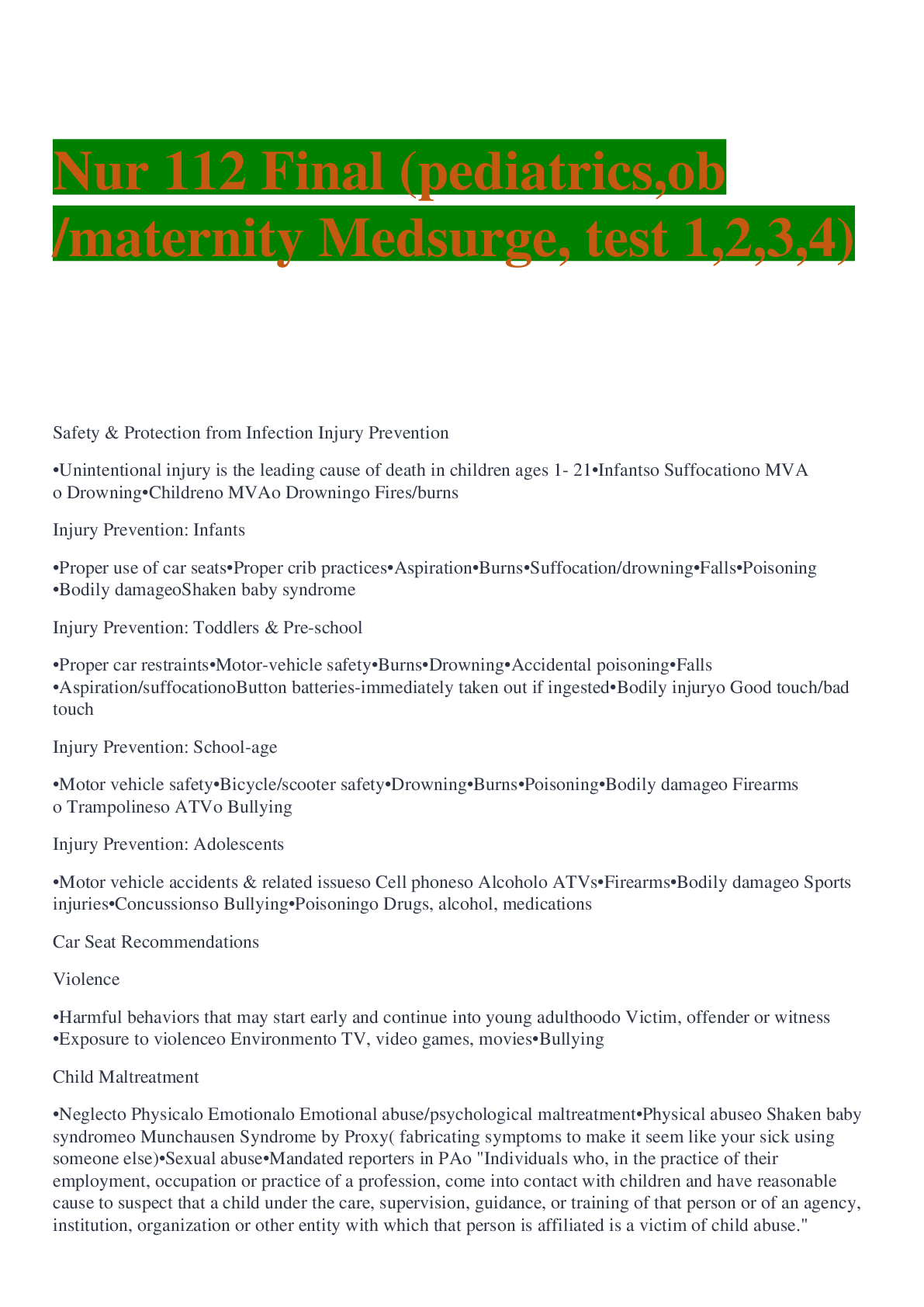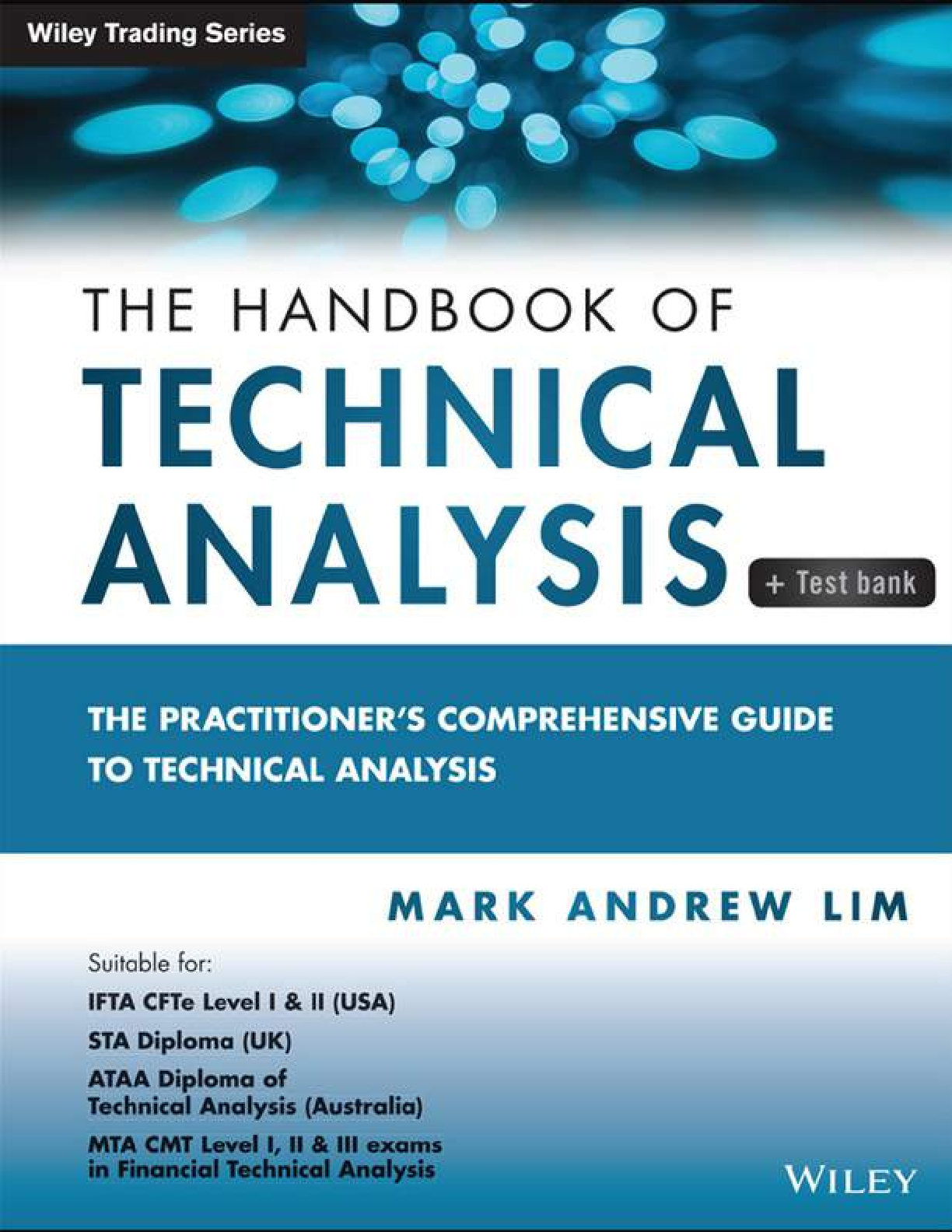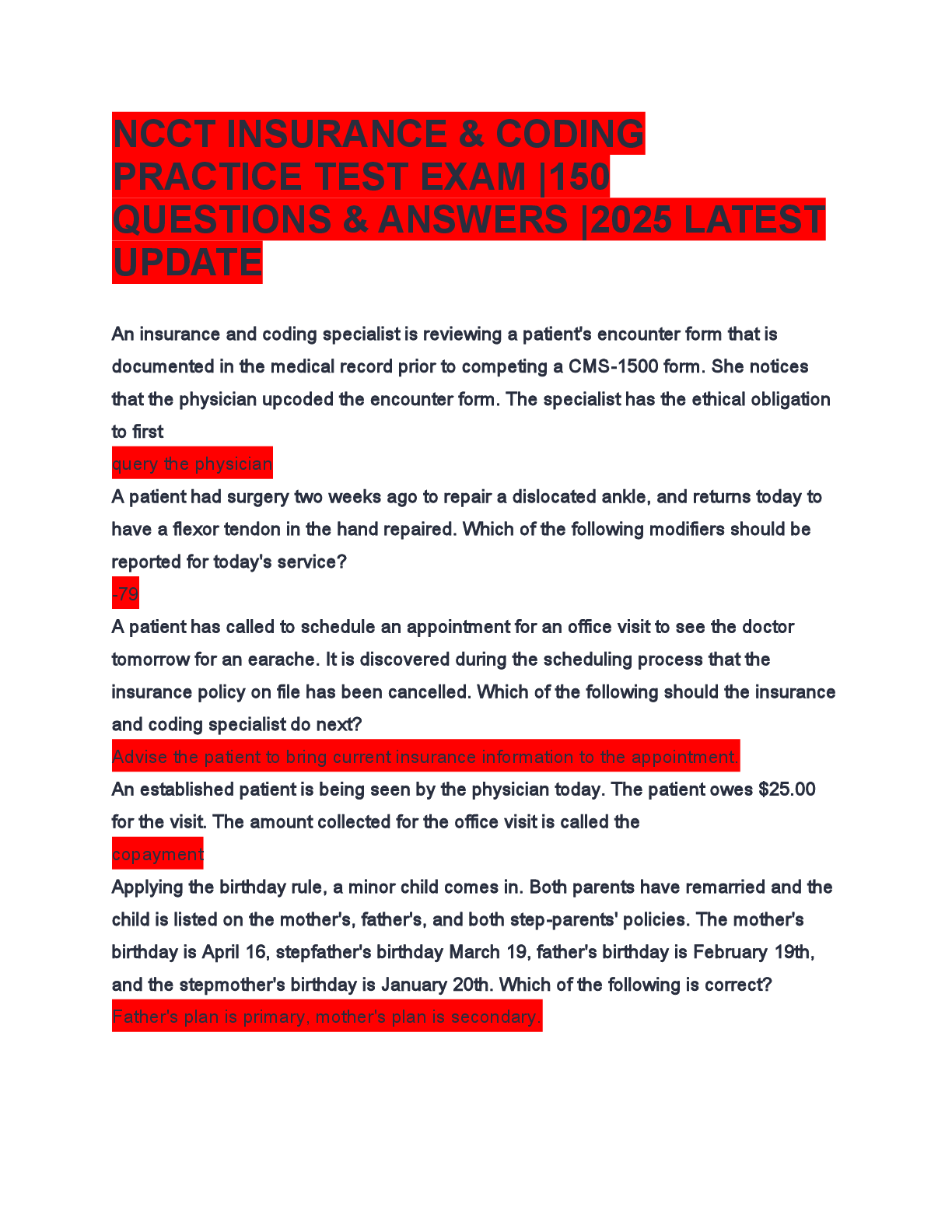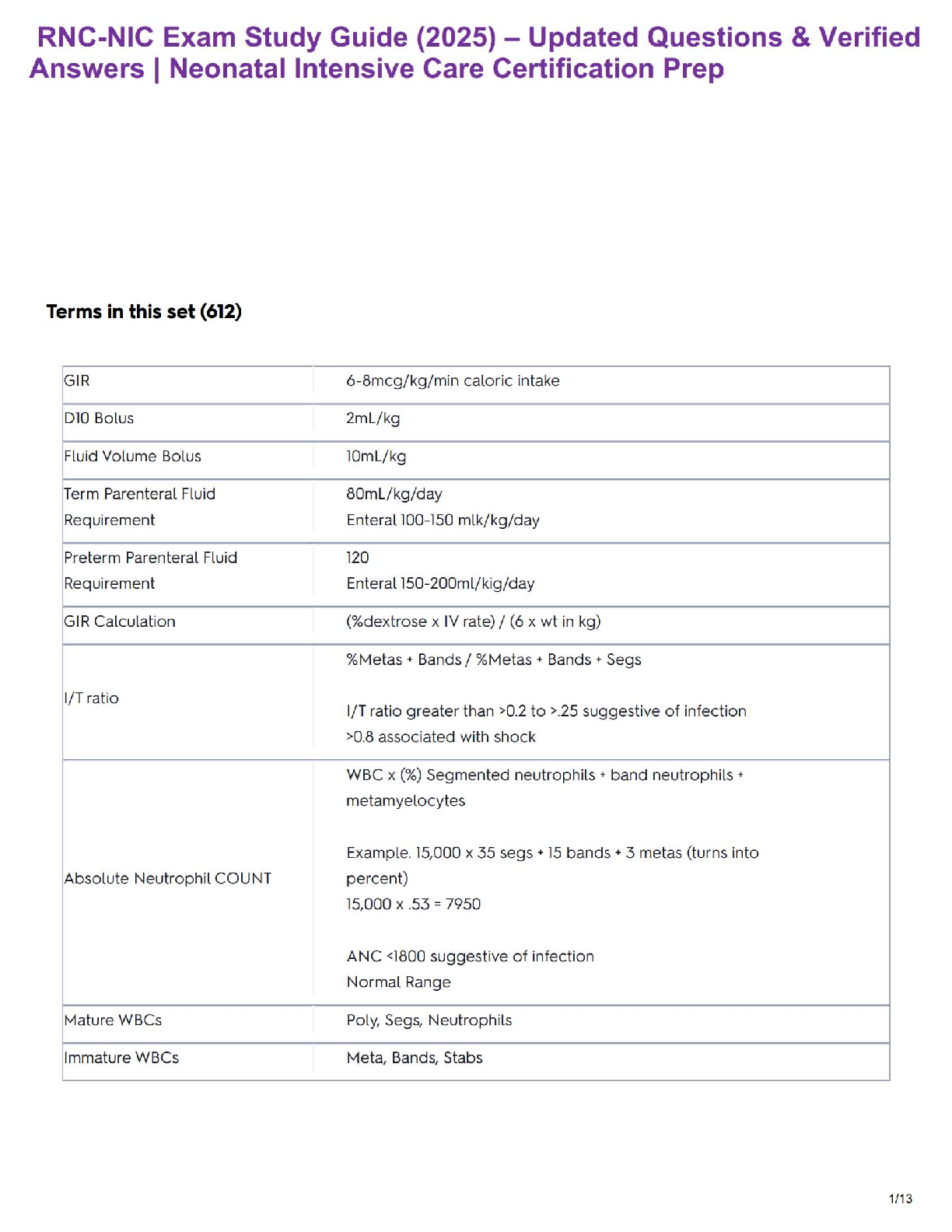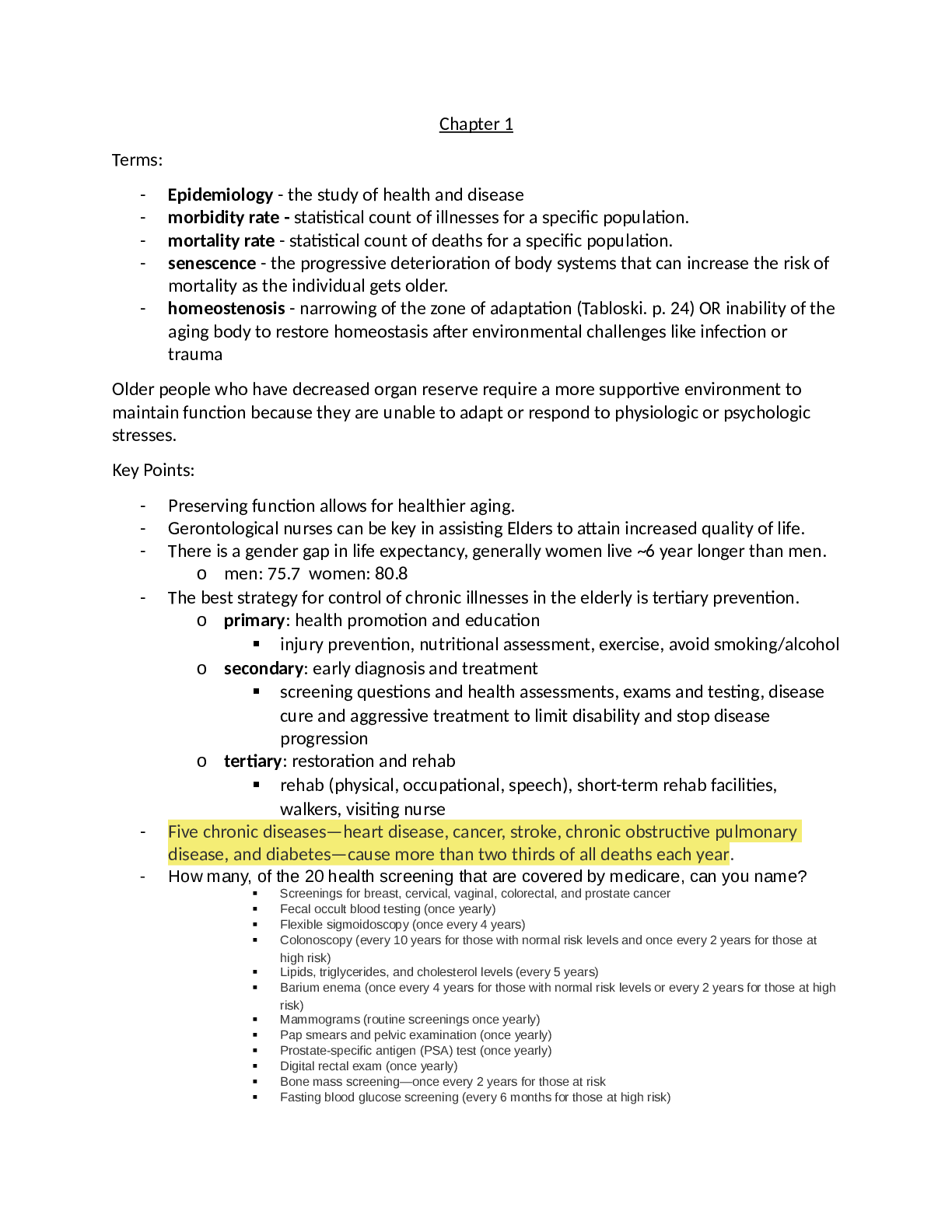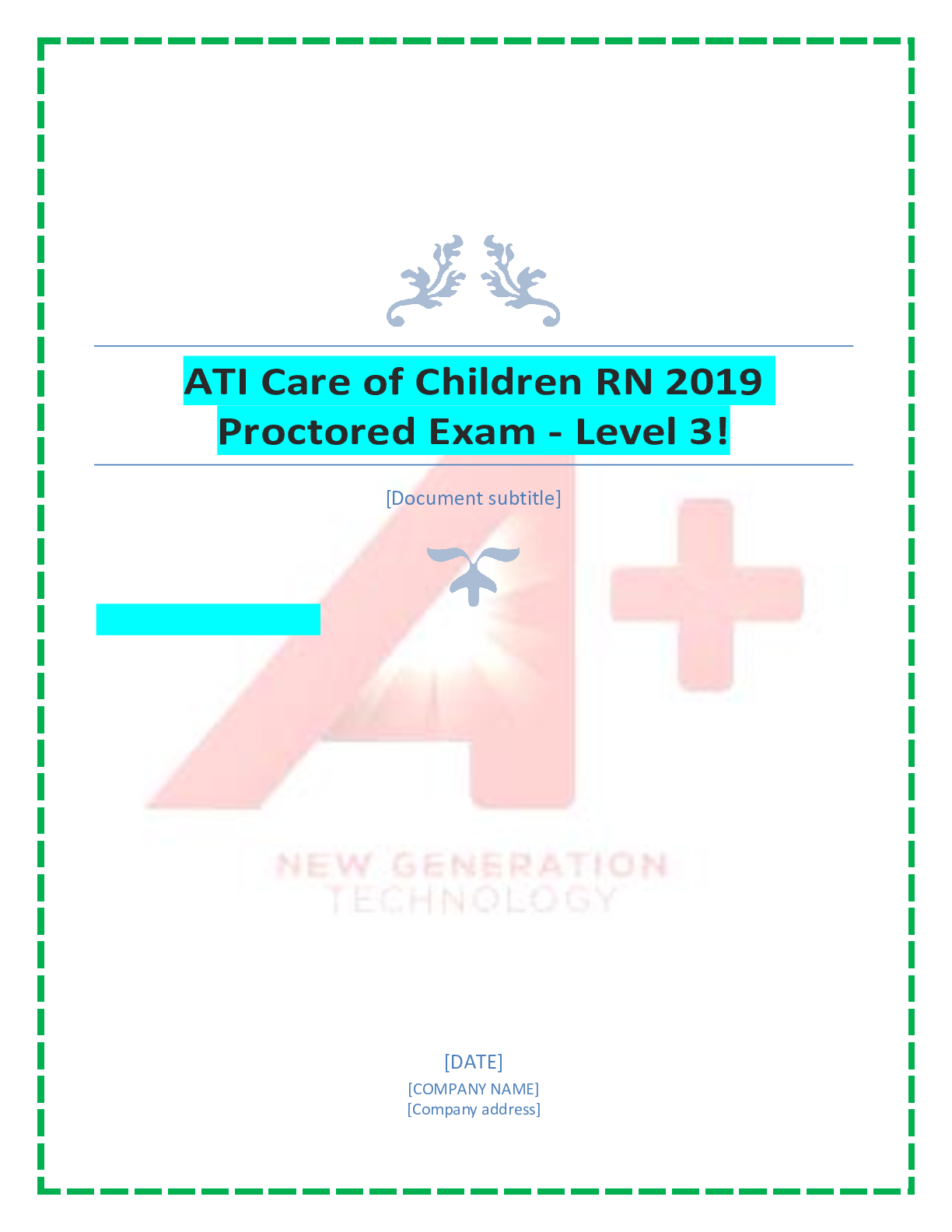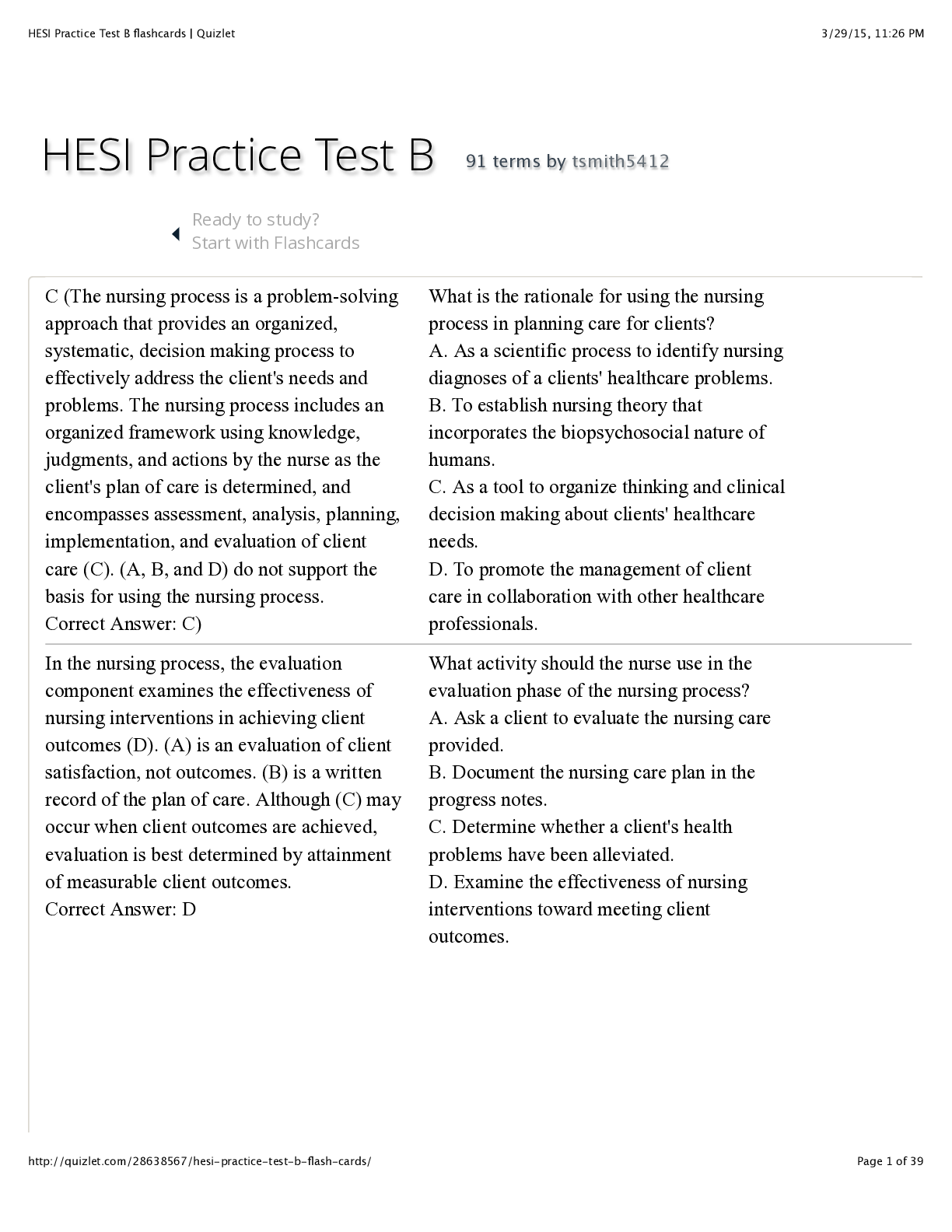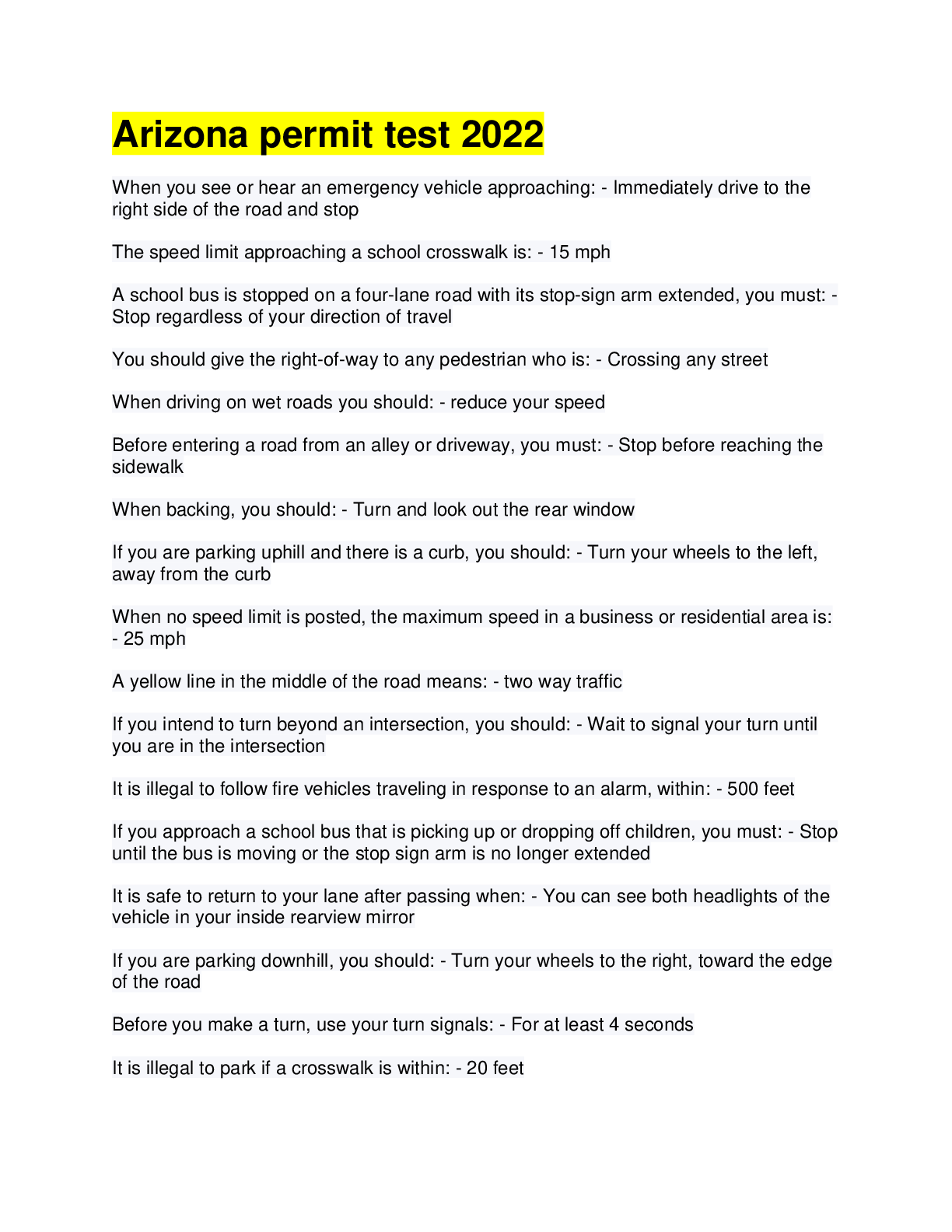Health Care > Test Prep > FIRST AID PRACTICE TEST #1 American Red Cross Test questions and correct answers 100% (All)
FIRST AID PRACTICE TEST #1 American Red Cross Test questions and correct answers 100%
Document Content and Description Below
1 Although choking is common in infants and children, more _______ than _______ die each year as a result. A. children / adults B. adults / children B. adults / children 2 One of the mos ... t dangerous threats to a seriously injured victim is unnecessary movement. A. true B. false A. true 3 Which statement regarding impaled object is correct? A. in most cases the object should not be removed. B. A splinter may be removed with tweezer if it is in the skin. C. In all cases impaled objects should not be removed. D. Both a & b are correct. C. In all cases impaled objects should not be removed. 4 If a victim is choking and yet still able to breathe or speak, the first aider should: A. Use abdominal thrusts. B. Encourage the victim to continue to cough forcefully on his/her own. B. Encourage the victim to continue to cough forcefully on his/her own. 5 First aiders should not put themselves in grave danger. Dangerous situation should be left to: A. Only licensed Emergency Medical Technicians or Licensed Physicians or Nurses. B. Professionals like fire fighters and police who have the training and equipment to deal with them. B. Professionals like fire fighters and police who have the training and equipment to deal with them. 6 To call the EMS system, you should use: A. 911 as it applies throughout the United States and you will get immediate help. B. The local emergency telephone number for your area and work place. B. The local emergency telephone number for your area and work place. 7 The most common type of wound is a ________ . It can easily become infected if not keep clean. A. Avulsion B. Bruise C. Cut D. Scrape D. Scrape 8 Severe allergic reactions may become life threatening when the victim's face, neck, and tongue: A. swell, closing the airway B. go into spasms A. swell, closing the airway 9 _____________ is usually slow and clots easily, and isn't a bright red. A. capilary B. venous C. arterial A. capillary 10 If a victim is conscious, talk to that person and ask how he or she feels. During a head-to-toe check: A. check: face; if breathing is normal; skin color, for any pain, odd bumps, a medical alert tag. B. Notice if the victim is drowsy, not alert or confused. C. Both a & b are correct. C. Both a & b are correct. 11 The first aider may determine there is an emergency by looking for: A. unusual situations or smells; pain or or deformity of limbs. B. unusual noises, sights, odors, appearance or behaviour. B. unusual noises, sights, odors, appearance or behaviour. 12 Before giving first aid to an injured or ill person, the first aider must have permission. The only exceptions are: A. if the conscious victim is a child and the condition is serious. B. If the victim is unconscious or unable to respond. C. Both a & b are correct. C. Both a & b are correct.. 13 First aiders need to stay calm and think before they act. There are three basic steps to take: A. Check the scene, call 911, and care for the victim B. Evaluate the situation, call 911, and secure care for the victim. A. Check the scene, call 911, and care for the victim . 14 When the first aider calls EMS there are important steps to follow. Which statement is most correct? A. Call 911 and give the exact location of the emergency. Then, do nothing until EMS arrives. B. Call the emergency number. Give the dispatcher the necessary information. Do NOT hang up until the dispatcher hangs up. Give care to the victim. B. Call the emergency number. Give the dispatcher the necessary information. Do NOT hang up until the dispatcher hangs up. Give care to the victim. 15 The MOST important thing you can do as a first aider is to: A. realize what care to provide. B. provide care until professional medical help arrives. C. call your local emergency phone number. C. call your local emergency phone number. 16 Which of the following situations would LEAST likely require a call to the EMS system: A. the victim is either bleeding severely, unconscious, has chest pain or has no pulse. B. the victim is either vomiting, has a severe headache, or has slurred speech. C. the victim has a known medical history of epilepsy or has had a seizure and is now sleepy. D. The victim either has chest pain, pain in the abdomen, or appears to have broken bones. C. the victim has a known medical history of epilepsy or has had a seizure and is now sle [Show More]
Last updated: 3 years ago
Preview 1 out of 18 pages

Buy this document to get the full access instantly
Instant Download Access after purchase
Buy NowInstant download
We Accept:

Reviews( 0 )
$12.00
Can't find what you want? Try our AI powered Search
Document information
Connected school, study & course
About the document
Uploaded On
Oct 29, 2022
Number of pages
18
Written in
All
Additional information
This document has been written for:
Uploaded
Oct 29, 2022
Downloads
0
Views
142






